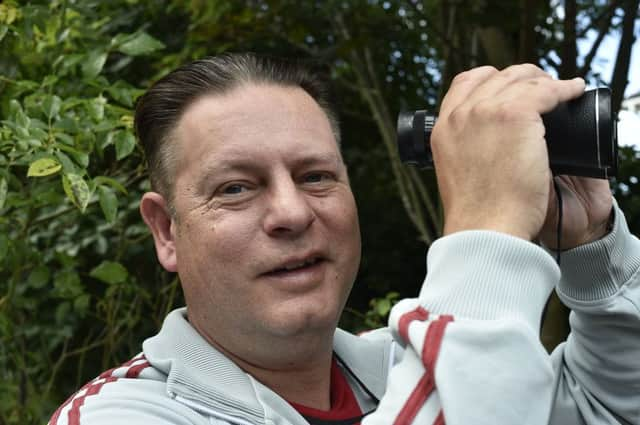Parakeets pop in to live in Peterborough


The bright green birds normally live in Africa or south Asia, but it appears a group of ring necked parakeets have moved to Longthorpe.
Carl Whitney, who lives in Nathan Close, said he had seen a number of birds feeding near his home.
Advertisement
Hide AdAdvertisement
Hide AdHe said: “Over the past two or three weeks I have seen them in groups of five or six on a daily basis. The neighbours have seen a similar thing as well.
“They tend to be more active early in the morning or late in the evening.
“They tend to be sitting on the top of the trees, or feeding on fruit trees in the area.
“I first thought they might be escaped birds who were pets, but because there are so many of them together, I think they are colonising in Longthorpe.”
Advertisement
Hide AdAdvertisement
Hide AdA spokesman for the RSPB confirmed it was likely the birds were living wild in Longthorpe – and the birds would be able to cope with almost anything the British weather could throw at them, despite their tropical roots.
He said: “The ring-necked parakeet is not native to the UK; it has become established in the wild after captive birds escaped or were released.
“The species is fully able to cope with the cold British winters, especially in suburban parks, large gardens and orchards, where food supply is more reliable.
“Ring-necked parakeets are growing in number. Greater London and the surrounding areas is still the species’ stronghold but recent population modelling has revealed that populations in Greater London have increased by approximately 30 per cent per year.
Advertisement
Hide AdAdvertisement
Hide Ad“Therefore, the birds being seen in Peterborough are most likely wild birds spreading to new areas as being seen in many areas.”
While the wild parakeet population is growing in the UK, the bird’s presence is causing issues for native species including woodpeckers, starlings and nuthatches, as well as for fruit growers.
They rely on food left on bird tables.
The RSPB said they were not in favour of a cull of wild parakeets, but were calling for close monitoring of the population, and the effect it had on British birds.
It is thought the UK’s wild population of ring necked parakeets was first formed in London in the 1970s when a number of birds escaped. There are now thought to be more than 8,500 breeding pairs in the country, with the largest population found in London – although there have been sightings at the Scottish borders and in Wales.